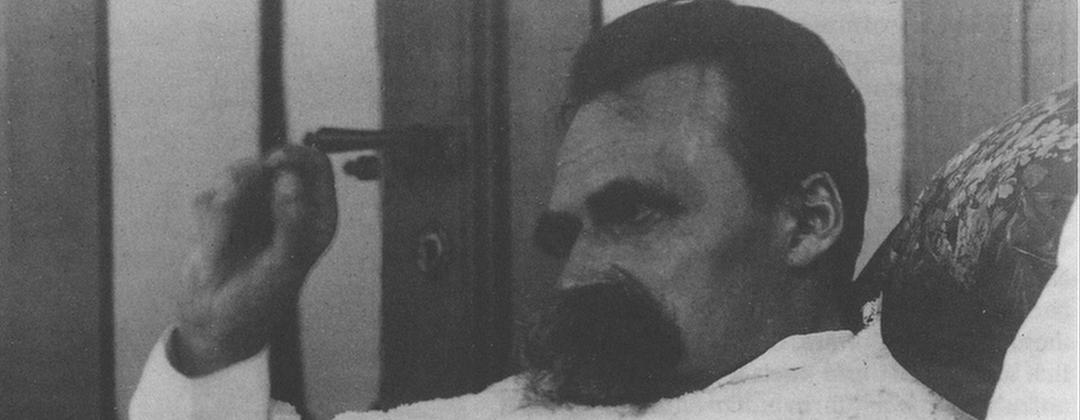Like I said a while back, this sort of thing amuses me.
She said “death panels,” she meant “death panels”
and for excellent reason, as Sarah Palin told the New York State Senate:
A great deal of attention was given to my use of the phrase “death panel” in discussing such rationing.[7] Despite repeated attempts by many in the media to dismiss this phrase as a “myth”, its accuracy has been vindicated. In the face of a nationwide public outcry, the Senate Finance Committee agreed to “drop end-of-life provisions from consideration entirely because of the way they could be misinterpreted and implemented incorrectly.”[8] Jim Towey, the former head of the White House Office of Faith-Based Initiatives, then called attention to what’s already occurring at the Department of Veteran’s Affairs, where “government bureaucrats are greasing the slippery slope that can start with cost containment but quickly become a systematic denial of care.”[9] Even Washington Post columnist Eugene Robinson, a strong supporter of President Obama, agreed that “if the government says it has to control health care costs and then offers to pay doctors to give advice about hospice care, citizens are not delusional to conclude that the goal is to reduce end-of-life spending.”[10] And of course President Obama has not backed away from his support for the creation of an unelected, largely unaccountable Independent Medicare Advisory Council to help control Medicare costs; he had previously suggested that such a group should guide decisions regarding “that huge driver of cost . . . the chronically ill and those toward the end of their lives . . .”[11]
The fact is that any group of government bureaucrats that makes decisions affecting life or death is essentially a “death panel.” The work of Dr. Ezekiel Emanuel, President Obama’s health policy advisor and the brother of his chief of staff, is particularly disturbing on this score. Dr. Emanuel has written extensively on the topic of rationed health care, describing a “Complete Lives System” for allotting medical care based on “a priority curve on which individuals aged between roughly 15 and 40 years get the most chance, whereas the youngest and oldest people get chances that are attenuated.”[12]
(Full text of her testimony below.)
Gov. Palin backed this up with her op-ed this evening in the Wall Street Journal:
In his Times op-ed, the president argues that the Democrats’ proposals “will finally bring skyrocketing health-care costs under control” by “cutting . . . waste and inefficiency in federal health programs like Medicare and Medicaid and in unwarranted subsidies to insurance companies . . .”
First, ask yourself whether the government that brought us such “waste and inefficiency” and “unwarranted subsidies” in the first place can be believed when it says that this time it will get things right. The nonpartisan Congressional Budget Office (CBO) doesn’t think so: Its director, Douglas Elmendorf, told the Senate Budget Committee in July that “in the legislation that has been reported we do not see the sort of fundamental changes that would be necessary to reduce the trajectory of federal health spending by a significant amount.”
Now look at one way Mr. Obama wants to eliminate inefficiency and waste: He’s asked Congress to create an Independent Medicare Advisory Council—an unelected, largely unaccountable group of experts charged with containing Medicare costs. In an interview with the New York Times in April, the president suggested that such a group, working outside of “normal political channels,” should guide decisions regarding that “huge driver of cost . . . the chronically ill and those toward the end of their lives . . .”
Given such statements, is it any wonder that many of the sick and elderly are concerned that the Democrats’ proposals will ultimately lead to rationing of their health care by—dare I say it—death panels? Establishment voices dismissed that phrase, but it rang true for many Americans. Working through “normal political channels,” they made themselves heard, and as a result Congress will likely reject a wrong-headed proposal to authorize end-of-life counseling in this cost-cutting context. But the fact remains that the Democrats’ proposals would still empower unelected bureaucrats to make decisions affecting life or death health-care matters. Such government overreaching is what we’ve come to expect from this administration.
As far as I’m concerned, she’s right on. Contrary to the misrepresentations of her position, she’s not accusing the president of wanting to fund euthanasia; the concern, rather, is that people will be denied care because some bureaucrat somewhere doesn’t think their lives have sufficient value (defined in economic terms) to be worth saving. Of course that’s what will happen—it’s inevitable. It’s also unacceptable, and here’s hoping it stays that way.
Full text of Gov. Palin’s testimony to the New York State Senate Committee on Aging:
Senator Reverend Ruben Diaz
Chair, New York Senate Aging Committee
Legislative Office Building
Room 307
Albany, NY 12247September 8, 2009
RE: H.R. 3200: America’s Affordable Health Choices Act of 2009 and Its Impact on Senior Citizens
Dear Senator Diaz,
Thank you for asking me to participate in the New York State Senate Aging Committee’s hearing regarding H.R. 3200, “America’s Affordable Health Choices Act of 2009.” You and I share a commitment to ensuring that our health care system is not “reformed” at the expense of America’s senior citizens.
I have been vocal in my opposition to Section 1233 of H.R.3200, entitled “Advance Care Planning Consultation.”[1] Proponents of the bill have described this section as an entirely voluntary provision that simply increases the information offered to Medicare recipients. That is misleading. The issue is the context in which that information is provided and the coercive effect these consultations will have in that context.
Section 1233 authorizes advanced care planning consultations for senior citizens on Medicare every five years, and more often “if there is a significant change in the health condition of the individual … or upon admission to a skilled nursing facility, a long-term care facility… or a hospice program.”[2] During those consultations, practitioners are to explain “the continuum of end-of-life services and supports available, including palliative care and hospice,” and the government benefits available to pay for such services.[3]
To understand this provision fully, it must be read in context. These consultations are authorized whenever a Medicare recipient’s health changes significantly or when they enter a nursing home, and they are part of a bill whose stated purpose is “to reduce the growth in health care spending.”[4] Is it any wonder that senior citizens might view such consultations as attempts to convince them to help reduce health care costs by accepting minimal end-of-life care? As one commentator has noted, Section 1233 “addresses compassionate goals in disconcerting proximity to fiscal ones…. If it’s all about obviating suffering, emotional or physical, what’s it doing in a measure to ‘bend the curve’ on health-care costs?”[5]
As you stated in your letter to Congressman Henry Waxman of California:
Section 1233 of House Resolution 3200 puts our senior citizens on a slippery slope and may diminish respect for the inherent dignity of each of their lives…. It is egregious to consider that any senior citizen … should be placed in a situation where he or she would feel pressured to save the government money by dying a little sooner than he or she otherwise would, be required to be counseled about the supposed benefits of killing oneself, or be encouraged to sign any end of life directives that they would not otherwise sign.[6]
It is unclear whether section 1233 or a provision like it will remain part of any final health care bill. Regardless of its fate, the larger issue of rationed health care remains.
A great deal of attention was given to my use of the phrase “death panel” in discussing such rationing.[7] Despite repeated attempts by many in the media to dismiss this phrase as a “myth”, its accuracy has been vindicated. In the face of a nationwide public outcry, the Senate Finance Committee agreed to “drop end-of-life provisions from consideration entirely because of the way they could be misinterpreted and implemented incorrectly.”[8] Jim Towey, the former head of the White House Office of Faith-Based Initiatives, then called attention to what’s already occurring at the Department of Veteran’s Affairs, where “government bureaucrats are greasing the slippery slope that can start with cost containment but quickly become a systematic denial of care.”[9] Even Washington Post columnist Eugene Robinson, a strong supporter of President Obama, agreed that “if the government says it has to control health care costs and then offers to pay doctors to give advice about hospice care, citizens are not delusional to conclude that the goal is to reduce end-of-life spending.”[10] And of course President Obama has not backed away from his support for the creation of an unelected, largely unaccountable Independent Medicare Advisory Council to help control Medicare costs; he had previously suggested that such a group should guide decisions regarding “that huge driver of cost . . . the chronically ill and those toward the end of their lives . . .”[11]
The fact is that any group of government bureaucrats that makes decisions affecting life or death is essentially a “death panel.” The work of Dr. Ezekiel Emanuel, President Obama’s health policy advisor and the brother of his chief of staff, is particularly disturbing on this score. Dr. Emanuel has written extensively on the topic of rationed health care, describing a “Complete Lives System” for allotting medical care based on “a priority curve on which individuals aged between roughly 15 and 40 years get the most chance, whereas the youngest and oldest people get chances that are attenuated.”[12]
He also has written that some medical services should not be guaranteed to those “who are irreversibly prevented from being or becoming participating citizens . . . An obvious example is not guaranteeing health services to patients with dementia.”[13]
Such ideas are shocking, but they could ultimately be used by government bureacrats to help determine the treatment of our loved ones. We must ensure that human dignity remains at the center of any proposed health care reform. Real health care reform would also follow free market principles, including the encouragement of health savings accounts; would remove the barriers to purchasing health insurance across state lines; and would include tort reform so as to potentially save billions each year in wasteful spending connected to the filing of frivolous lawsuits. H.R. 3200 is not the reform we are looking for.
Thank you for calling attention to this important matter. I look forward to working with you again to ensure that we keep the dignity of our senior citizens foremost in any health care discussion.
Sincerely,
Governor Sarah Palin
1 See http://edlabor.house.gov/documents/111/pdf/publications/AAHCA-BillText-071409.pdf
2 See HR 3200 sec. 1233 (hhh)(1); sec. 1233 (hhh)(3)(B)(1), above.
3 See HR 3200 sec. 1233 (hhh)(1)(E), above.
4 See http://edlabor.house.gov/documents/111/pdf/publications/AAHCA-BillText-071409.pdf
5 See http://www.washingtonpost.com/wp-dyn/content/article/2009/08/07/AR2009080703043.html
6 See http://www.nysenate.gov/press-release/letter-congressman-henry-waxman-re-section-1233-hr-3200
7 See http://www.facebook.com/note.php?note_id=113851103434
8 See http://thehill.com/homenews/senate/54617-finance-committee-to-drop-end-of-life-provision
9 Seehttp://online.wsj.com/article/SB10001424052970204683204574358590107981718.html
10 See http://www.washingtonpost.com/wp-dyn/content/article/2009/08/10/AR2009081002455.html
11 See http://www.nytimes.com/2009/05/03/magazine/03Obama-t.html?_r=1&pagewanted=1
12 See http://www.scribd.com/doc/18280675/Principles-for-Allocation-of-Scarce-Medical-Interventions
13 Seehttp://www.ncpa.org/pdfs/Where_Civic_Republicanism_and_Deliberative_Democracy_Meet.pdf
Sarah Palin and the Kobayashi Maru
This was posted on Big Hollywood over a month ago now, and I have no idea how I missed it; this is just too fun. A tip of the hat to Leigh Scott for coming up with this:
Sarah Palin is Captain Kirk. Why? Because she just passed the Kobayashi Maru.
For those of you who don’t know what the Kobayashi Maru is, let me explain. In the Star Trek universe it is an unwinnable test. It’s creator, Mr. Spock, designed it to test how Starfleet captains deal with failure and death. There is no right way to successfully navigate through it.
But cadet James Tiberius Kirk found a way to beat it. He rigged the computer simulation to allow him to complete the mission without killing his crew. Starfleet accused him of cheating, but Kirk’s response was simple, eloquent, and very revealing. “I don’t believe in the no-win scenario. I don’t like to lose.” Kirk didn’t change the strategy. He changed the rules. . . .
Palin was faced with her own Kobayashi Maru. How could she effectively govern the state of Alaska while facing ridiculous ethics charges and the scrutiny of the national media? How could she increase her exposure in the lower 48 while staying true to the people in Alaska who elected her? Perhaps if the wingnuts in Alaska didn’t stalk her with silly lawsuits she would have simply put her larger ambitions on the back burner and continued to do her job as governor. But it wasn’t meant to be. She was perfectly set up to fail. Her popularity in Alaska would decline. The national media would point to it as an indicator of her overall effectiveness. The Klingons . . . I mean the left, would have won.
But Palin defied them. She changed not her strategy, but the very rules. She resigned her position, turning the state over to her loyal Lieutenant Governor to continue the plans and policies she put into motion. Like any good story, it was an unexpected twist, yet when viewed in retrospect it was the only way it could play out.
That’s an interesting analogy. You might not like the comparison between Sarah Palin and James T. Kirk in general, but as an analysis of what exactly Gov. Palin did with her resignation, I think it’s a good one.
On this blog in history: April 1-6, 2008
April Fool!
Have you ever thought of April Fool’s Day as a Christian holiday?
Responsibility
A thought on a melancholy little passage from James Baldwin.
Martin Luther King Jr.: yad vashem
A tribute, and a consideration of his legacy and what we’ve made of it.
Brief meditation on gratitude and discipleship
True discipleship only grows from gratitude.
Thoughts on Jesus’ ascension
Yes, Ascension Day matters.
Sometimes it’s nice to be wrong
Back in May, I noted that gas prices had climbed by 60 cents a gallon in the previous several weeks and predicted that they would keep climbing; I thought there was a good chance they’d be threatening the $4 per gallon mark again by Labor Day. Instead, they’ve dropped slightly over that time (down below $2.40 a gallon here this morning); the weakness of the economy has stifled the rise that I thought I saw coming, at least for now. (For the long term, I still see people projecting a significant rise in oil prices, and the administration policies that would tend to drive that are still in place.)
I’m glad I was wrong about that. I’m glad because higher gas prices would have taken money out of our pocket as a family; I’m glad because part of the picture in all this is that the energy-tax bill hasn’t passed the Senate; and I’m glad because I think the country’s better off than it would have been had I been right.
Sarah Palin knew what she was doing
when she stepped down and turned the Alaska governor’s office over to Sean Parnell: he’s been able to govern Alaska without the farrago of nonsense and spite that was draining her time and energy, since he isn’t Target No. 1 for the Left and its battalion of snipers, and he’s been carrying on her policies and approaches the same way she would have, as the ADN points out:
Gov. Sean Parnell is playing the state’s cards just right with the North Slope gas holders. Before they’ll invest billions in a North Slope gas pipeline, they say they need more “fiscal certainty” over future taxes than the state is currently offering. It’s too early to talk about more concessions, says Gov. Parnell. The big three gas holders are split between two different gas line projects, including one led by the state’s licensee, TransCanada. When the gas holders unite behind a common project, Gov. Parnell says, then we can talk about whether more tax certainty is really needed.
That’s absolutely the right call. . . .
With so much at stake, a misstep in this business deal could cost the state billions. As Gov. Parnell has said, in business, one rule is that you don’t negotiate against yourself. You don’t give up valuable things early in the process before you are absolutely certain it’s necessary. . . .
Gov. Parnell is not worried about being “friendly” with the oil and gas industry on the gas line. He’s doing what a responsible Alaska governor should be doing. He is taking a strong stand that protects the business interests of his “shareholders”—Alaska’s citizens—in this multibillion-dollar business deal.
So, she got free of the anklebiters and put herself in a position to influence the direction of this country on a national level through Facebook and other platforms, all without jeopardizing the success of the initiatives she’d begun in Alaska, because she knew she and her successor were on the same page and he had the skills and the understanding to finish what she’d started. Not that it’s really needed at this point, but I’d say that’s yet more vindication of Gov. Palin’s political judgment and the wisdom of her decision to resign.
(Crossposted at Conservatives4Palin)
The angle of faith
There are a lot of folks in this world who try to live the Christian life out of their own strength, according to their own wisdom, as it seems reasonable to them; and there are a lot of churches that cater to such folks, and operate on such principles. That, I think, is part of the reason for the modern desire for legalism that Jared Wilson has written so much about. The problem is, that just doesn’t work; you can’t live a life that is in any meaningful way Christian from the same perspective and the same set of assumptions from which the world operates. You just can’t do it. Following Christ in this life has to begin with the renewing of our minds, with a radical shift in perspective and assumptions, because it’s only from that new perspective that we can even see what the Christian life really is, let alone that it makes any sense at all.
From the world’s perspective, life is all about us; from the perspective of faith, it’s all about God. From a human perspective, the life of faith makes no sense, because we can’t control how God will take care of us; from the perspective of faith, we can see that he will always give us what is best for us, and always in time. And a human perspective on how to live the Christian life breaks down, because it understands neither the depth of our sin nor the goodness of God, into either legalism or lawlessness. The perspective of faith helps us to see just how bad our sin is, and just how thoroughly it permeates our lives—and just how great a gift our salvation is, and how wonderful the grace of God is, and how much better God is than anything this world has to offer; it inspires us to gratitude for that gift and the desire to please God, and to know God, and that is what drives the kind of life that pleases him. Indeed, only that can produce the kind of life that pleases him, because what he wants most of all is for us to seek him.
(Adapted from “The View from Saturday”)
Programming note
I’ve added the post on my most-searched posts to the blog orientation at the head of the sidebar. While I was at it, I realized that I’d missed one, a post I did a year ago August on the elemental powers of this world, so I added that in, with an additional link to a follow-up post I did, working with an insight contributed by cyberfriend and commenter Doug Hagler.
Notes and neurons
I was thinking about this this morning and realized I’d never gotten around to posting it; this is wonderful. It is indeed, as Bobby McFerrin says, the power of the pentatonic scale—and of music in general, I think; it’s also a remarkable illustration of the beauty of the order of God’s creation, and of the ways in which we’re made for, and made to respond to, that order, even in our fallen state.
The View from Saturday
(Proverbs 2:1-11; James 1:1-12)
One of the good things about being a parent is that there are a lot of great children’s books; in fact, the really good children’s authors are some of the best writers going these days. Though many adult books ought to go right from the publisher to the recycle bin—including many best-sellers—there are a lot of books written for kids which most adults would do well to read. One of the authors who comes to mind for me when I say that, and certainly one of the most respected authors of children’s novels out there, is E. L. Konigsburg.
A trained chemist who decided she lacked the temperament to work in that field—during her master’s work at the University of Pittsburgh, she twice blew up the laboratory sink—Konigsburg started writing fairly late, in her mid-30s, after the last of her three children was in kindergarten. She started with a bang, though, winning the 1968 Newbery Medal for her first book, From the Mixed-Up Files of Mrs. Basil E. Frankweiler—and seeing her second novel finish as runner-up that same year, the only time that’s ever happened. 29 years later, she became one of just five people to win two Newberys—and set the record for the longest gap in between wins—with her novel The View from Saturday, which might just be the best book of her long and illustrious career.
That is, of course, the book from which I took the title of this message, and I did so for good reason. The View from Saturday is a book which says that life only makes sense when you look at it from the right perspective. It’s the story of four gifted sixth-grade misfits—Noah Gershom, Nadia Diamondstein, Ethan Potter, and Julian Singh—and their teacher, Mrs. Olinski, newly paralyzed from a terrible car accident and adjusting to life in a wheelchair. Mrs. Olinski chooses Noah, Nadia, Ethan and Julian to be their school’s sixth-grade Academic Bowl team—but it’s Julian, a recent immigrant from India with a rather different outlook on life, who makes them a team by inviting them to tea at his house every Saturday. The book intersperses the account of their final match, in the championship—which they of course win, becoming the first sixth-grade team ever to beat the eighth-graders—with chapters in which the team members, gathered for tea, tell each other their own stories.
It’s a brilliant book, and the title is the key to understanding it. It’s fundamentally about the way that the view from Saturday—first, the Saturday tea parties, and second, the great Saturday on which they win the championship—changes the way the members of this team see everything else about their lives, and ultimately changes them. In the view from Saturday, their lives look very different, and say very different things about them, because they themselves are different—and better. From that angle, everything else makes sense; from that angle, looking backward, they are able to see themselves clearly enough to see the way forward.
E. L. Konigsburg has captured something very important here: life only makes sense when looked at from the right perspective. This truth is critical to understanding the Christian life, and especially to understanding the letter of James. To be sure, there are many who would see little value in understanding James. For such a straightforward, plainspoken book, it’s an odd one, with an odd history; partly because it’s so plainspoken, people have tended to treat it too simply, as a book they don’t have to think to understand, and that’s caused all sorts of problems. Most famously, Martin Luther took it to contradict the letters of Paul and proclaimed it a “right strawy epistle,” even going so far as to tear it out of his own copy of the Bible, and in so doing set in motion centuries of Protestant neglect. This is unfortunate, because it’s a profoundly important book for our understanding of the Christian life, and one which rewards study.
Perhaps the most important thing to note is that the first chapter serves as a sort of overture to the rest of the book, setting out the themes which James will explore at greater length in chapters 2 through 5. In so doing, he’s able to set these smaller themes in the context of the overarching themes of the book; in my judgment, there are two, closely related. One, which finds its best statement in James 4:4, is that there are two ways set before us—the way of friendship with the world, and the way of friendship with God—which are mutually exclusive. This contrast between the two ways drives much of this book. The other is that the way of friendship with God only makes sense, to borrow from E. L. Konigsburg, in the view from Saturday—or perhaps we might say, the view from Sunday. From the world’s perspective, this way of life makes no more sense, and has no more value, than did the lives of Noah, Nadia, Ethan and Julian; but just as Saturday gave those four gifted young people a new place to stand to see their lives in a new way, so faith in God gives us a new place to stand, so that we can see our lives in a new way.
From the world’s perspective, life is all about us; from the perspective of faith, it’s all about God. From a human perspective, the life of faith makes no sense, because we can’t control how God will take care of us; from the perspective of faith, we can see that he will always give us what is best for us, and always in time. And a human perspective on how to live the Christian life breaks down, because it understands neither the depth of our sin nor the goodness of God, into either legalism or lawlessness. The perspective of faith helps us to see just how bad our sin is, and just how thoroughly it permeates our lives—and just how great a gift our salvation is, and how wonderful the grace of God is, and how much better God is than anything this world has to offer; it inspires us to gratitude for that gift and the desire to please God, and to know God, and that is what drives the kind of life that pleases him. Indeed, only that can produce the kind of life that pleases him, because what he wants most of all is for us to seek him.
It’s in this light that James says, “Whenever you face trials of any kind, consider it pure joy.” From a human perspective, that’s ludicrous. Consider it pure joy when your back gives out, or your knee, or your hip, and you need surgery? Consider it pure joy when you fight temptation? Consider it pure joy when someone you love is sick? Consider it pure joy when you’re threatened and your home is attacked? That takes a lot of nerve to say; but that’s what James says. He’s not saying you should be happy when trials come—it’s not as if we’re supposed to say, “Oh goody, I’ve just been evicted from my home, isn’t this wonderful”—but in the midst of trials and the struggle and suffering they bring, we should find joy. Why? Because unlike happiness, which is rooted in our circumstances, joy is rooted in the promises of God through Jesus Christ, and in our certainty that he who made those promises is faithful to keep them.
One of those promises is that God is in control in everything that happens to us, using it for our good; and so James says here, “Consider it pure joy, because you know that the testing of your faith produces endurance.” We talked about the importance of endurance last week from 1 Timothy 6; it has been often and truly said that the Christian life is a marathon, not a sprint, which means that if we’re running to win, we have to be able to keep up the pace, even when it’s hardest. Here, James adds the observation that it’s precisely in doing this, in facing trials and not giving up or backing down, that we build endurance. Just as exercise tries our muscles in order to force them to respond and grow, building physical strength and endurance, so trials force us to respond and grow as whole people, building strength of character and the ability to endure difficult times without losing our faith. Of course, if you overstress your muscles, you’ll hurt yourself, and a trial too great for us to handle would do the same; but we can trust that God won’t send us any trials we can’t handle—even if, as Mother Theresa once said, we might sometimes wish he didn’t trust us so much. It’s simply that, as we saw last week, the only way to build endurance is to reach what we think is our limit—and keep going.
As we face trials, the testing of our faith produces endurance in our faith; and as we grow in endurance, we mature in the work God has called us to do, bringing that work ultimately to completion. And note the purpose James declares for this—not simply that we each might do good things, but so that we ourselves might be perfect and complete. Ultimately, it’s not only the things we do that are the work in view here, but it’s us—we are the finished product. The idea is, as NT scholar Luke Timothy Johnson puts it, that the deed perfects the person: as we endure trials and act in faith and hold fast to God and do his will, God works in us through these actions to transform and perfect us, to bring his work in us to full maturity, so that we may be perfect and complete, with no areas in which we fall short.
Now, as we’ve already noted, from a human point of view, this all sounds very fishy; to really understand it, we need a different perspective, a view from Saturday. Put another way, we need more than human wisdom, we need the wisdom of God; we need the ability to see ourselves and our world truly, and to turn that true perception into proper action. That’s what biblical wisdom means: to learn how to live in accordance with the will and character of God, and then to live that way. Thus James says here, “If any of you don’t understand this, if this doesn’t make sense to you, then ask God for wisdom to be able to understand it; and if you ask God, who gives to everyone generously and without complaint, for wisdom, he’ll give it to you.” It is, after all, God’s desire that we know him, that we know his will for our lives, and that we do his will; if we ask him to give us the wisdom we need to be able to do that, the new perspective we need to see our lives as he sees us, we may do so in the certainty that he will give us what we ask.
This is why James comes down so hard on doubt. He’s not talking here about those who struggle to believe, who are committed to faith in God but find it hard going; rather, he’s talking about someone we might almost call a professional doubter, someone who truly has a divided mind and heart—they have one foot in the community of faith, and one foot in the world, and they just aren’t willing to take that second step all the way in. It’s not that they doubt that God can give them his wisdom—but they’re doubtful that they want it; and that sort of doubt disables prayer, and is absolutely lethal to the life of faith. Such people are, as James says, unstable, driven and tossed about by every gust of wind, like waves on the sea.
By contrast, if we take that second step, if we commit ourselves to live by faith, even though that might seem very uncertain from the world’s point of view, we find that we stand firm and fast on a solid rock. To the world, that seems hard to believe, for all the world sees is our faith, and our faith isn’t enough by itself to hold us up—some days, our faith is strong, but other days it’s weak, as it’s unclear to us what God is doing, or even if he’s doing anything with us at all. But the key here is that our faith doesn’t need to support us, for we haven’t put our faith in our faith—we have put our faith in Christ, and no matter what trials may come, no matter what testing we may face, Christ is the solid ground beneath our feet, the firm foundation of our lives, and the anchor who holds us fast in even the worst of storms.









